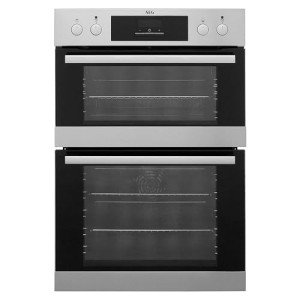The Rise of Built-in Ovens: A Blend of Functionality and Style in Modern Kitchens
Recently, the kitchen area has actually developed into a central hub of the home where performance meets design. Among the lots of home appliances that contribute to this improvement, built-in ovens stand out as a popular choice for property owners and designers alike. These sleek and efficient devices use a wide range of benefits, dealing with the needs of contemporary culinary lovers while boosting the overall aesthetic of the kitchen.
What Are Built-in Ovens?
Built-in ovens are cooking area devices designed to be set up straight into the cabinets, offering a smooth and integrated look. Unlike conventional freestanding ovens, which can take up valuable flooring space and interrupt the circulation of a kitchen area design, built-in ovens can be placed at eye level or conveniently stashed, taking full advantage of efficiency and ease of use.
Kinds Of Built-in Ovens
Wall Ovens: These ovens are set up in a wall cabinet and can be positioned at a height that eliminates the need to flex down. Wall ovens often can be found in single and double setups, enabling versatile cooking choices.
European Models: Known for their compact style, European built-in ovens are popular in smaller cooking areas where area is at a premium. They frequently include advanced functions while preserving a streamlined look.
Mix Ovens: These flexible home appliances integrate multiple cooking techniques, such as convection baking and microwave cooking, in one unit. They conserve area and time, making meal preparation more effective.
Steam Ovens: Gaining traction in high end kitchens, steam ovens use wetness to cook food, retaining nutrients while developing perfectly tender dishes. They can be built-in as standalone units or combined with other cooking types.
Advantages of Built-in Ovens
1. Area Savvy Design
Built-in ovens are a terrific service for taking full advantage of space in the cooking area. With their structured design, they can be included nicely into kitchen cabinetry, allowing for a more orderly cooking location. This design option releases up counter space for food preparation and improves the total circulation of the cooking area.
2. Aesthetic Appeal
Built-in ovens been available in a variety of styles and finishes, consisting of stainless-steel, black, and custom kitchen cabinetry options. This flexibility enables property owners to select an oven that complements their kitchen style, whether it be contemporary, conventional, or minimalist. The seamless integration develops a refined look that improves the cooking area's visual appeal.
3. Increased Accessibility
Setting up a built-in oven at eye level not only makes it more accessible but also enhances security by reducing the danger of burns and injuries connected with bending down to recover hot dishes. This ergonomic benefit is especially advantageous for people with mobility problems or those who prepare regularly.
4. Advanced Technology and Features

Modern built-in ovens are equipped with the most recent cooking innovations, consisting of touch controls, Wi-Fi connection, and wise features that enable users to keep an eye on and control their cooking from a smart device. Numerous models also use self-cleaning alternatives, ensuring maintenance is as simple and easy as the cooking process.
5. Boosted Cooking Experience
With various cooking modes, including convection cooking, broiling, and baking, built-in ovens accommodate varied cooking needs. The precise temperature level control and even heat circulation also contribute to better cooking results, improving the overall dining experience.
Considerations When Choosing a Built-in Oven
While built-in ovens use numerous advantages, possible purchasers should think about numerous factors before making a purchase:
Space Availability: Measure the designated location to guarantee an appropriate fit, accounting for ventilation and clearance requirements.
Capability: Choose an oven size that meets cooking needs, specifically for larger families or avid performers.
Features and Technology: Assess which features are necessary for cooking processes. Do you require a steam function or advanced wise technology?
Spending plan: Built-in ovens can vary extensively in cost, so it's essential to develop a spending plan while thinking about long-term worth and durability.
Conclusion
Built-in ovens have basically changed the landscape of modern kitchen areas, offering a combination of elegance, practicality, and advanced innovation. As cooking ends up being a significantly valued ability and social activity, the demand for high-quality home appliances that enhance both experience and design is most likely to continue growing. Purchasing a built-in oven not only raises the baking and cooking process but also contributes to an elegant and practical kitchen area that fulfills the needs these days's households. Whether you're a casual cook or a culinary expert, a built-in oven can make all the difference in your kitchen area's performance and design.
